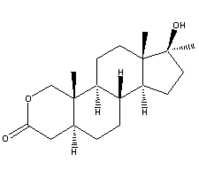D Lee, MD; T Kramer, MD(*); S Yeh, MD; H Corelli, MD; G Serfilippi, MD; G Giessel, MD; M Gotfried, MD and along with the M012 study group. Wilmington Health Associates, Wilmington, NC; BTGC, Iselin, NJ; VAMC, Northport, NY; Pulmonary Consultants of North Idaho, Coeur'd Alene, ID; Capital Pulmonary & Critical Care Services, Albany, NY; Pulmonary Associates, Richmond, VA and, Phoenix, AZ.
PURPOSE: Involuntary weight loss is a common complication of COPD, associated with negative outcomes independent of the degree of airflow limitation. Weight restoration has been associated with improved outcomes. We evaluated the effects of the oral anabolic agent, oxandrolone (OX), as an adjunct to restoring weight in COPD-associated weight loss.
METHODS: This prospective, open-label, 4-month, multicenter, community-based clinical trial enrolled patients with moderate-to-severe COPD as defined by one-second forced expiratory volume (FEV1) less than 50% predicted and FEV1/forced vital capacity ratio less than 070, along with significant involuntary weight loss (weight [is greater than or equal to] 90% ideal body weight). Patients were provided oral OX 10mg BID. A diet with sufficient calories and protein was advised, as was exercise as tolerated. Body weight, body composition by bioelectric impedance analysis (BIA), spirometry (PFT), and six-minute walking distance (6MWD) were measured. Data for 79 patients at 2 months and 51 patients at 4 months are presented.
RESULTS: At month 2, 87% of patients had gained a mean of 6 lbs, and 13% had no change or had lost a mean of 1.7 lbs. At month 4, 84% had gained a mean of 6.3 lbs, and 16% had no change or lost a mean of 2 lbs. The increases in weight were significant, p=0.0001. BIA at month 4 showed the weight to be primarily lean tissue, with a mean increase in body cell mass of 3 lbs (p=0.0001), and a mean increase in fat of 1.3 lbs (p=0.08). Mean 6MWD increased 11 meters. There was no significant change in PFTs. OX was generally well tolerated, and appetite was significantly increased (p=0.0002). Early dropouts were mainly due to intercurrent illness, primarily COPD exacerbation.
CONCLUSION: This final analysis of the completed study confirms the interim data previously reported. Oxandrolone is effective as an adjunct in restoring weight/or patients with COPD-associated weight loss. Weight gain is primarily lean mass, in contrast to the predominantly adipose tissue accrued with use of appetite stimulants or progestational agents. Although functional outcomes were not affected in this trial, an ongoing randomized, double-blind, placebo control study may ultimately reveal such improvements.
CLINICAL IMPLICATIONS: The oral anabolic agent, oxandrolone, can facilitate wei ht restoration inpatients who have lost weight due to COPD, and should be a consideration in the comprehensive care of such patients.
GRANT SUPPORT: Supported by Bio-Technology General Corp.
COPYRIGHT 2000 American College of Chest Physicians
COPYRIGHT 2001 Gale Group



